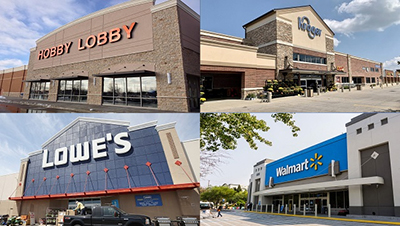
Single-Tenant Big Box Property Cap Rates Compress

The Boulder Group, Wilmette, Ill., said single-tenant net lease big box sector cap rates decreased 50 basis points between late 2020 and late 2021 to 6.25 percent.
The firm’s quarterly Net Lease Big Box Report attributed the cap rate decrease to increased activity in the big box sector as substantial amounts of capital target it–particularly institutional investors. “Once the economy began to recover from the initial pandemic, activity within the sector increased,” Boulder President Randy Blankstein said.
Big box investors “flocked” to properties categorized as essential retail with investment-grade ratings including grocery and home improvement stores during the COVID-19 pandemic, the report said. Then, throughout last year, big box investors became more comfortable with non-essential retailers. Accordingly, the spread between investment-grade and non-investment-grade big box retailers shrank from 105 basis points in 2020 to 90 basis points in late 2021.
“Following the surge in demand for essential and investment-grade retailers in 2020, the supply of these assets were limited in 2021,” Boulder said, noting less than 10 percent of the net lease big box sector was comprised of investment-grade grocery-related or home improvement tenants in late 2021. “Properties with these tenants were priced at an even greater premium,” the report said.
Despite positive investor sentiment for the big box sector, these properties are still priced at a discount to the overall net lease retail market, Boulder said. In fourth-quarter 2021, the net lease big box sector priced at a 37-basis point discount to all net lease retail assets.
“The single tenant net lease big box sector will continue to see demand from both individual and institutional buyers,” the report said. “The most conservative investors will pay a significant premium for specific assets such as Walmart and Home Depot. The higher yields generated by this asset class will be attractive to financial buyers utilizing low interest rate debt. Despite lower demand for non-investment grade big box, a market for these assets still exist for properties with favorable underlying real estate, strong performing locations or below-market rents.”
